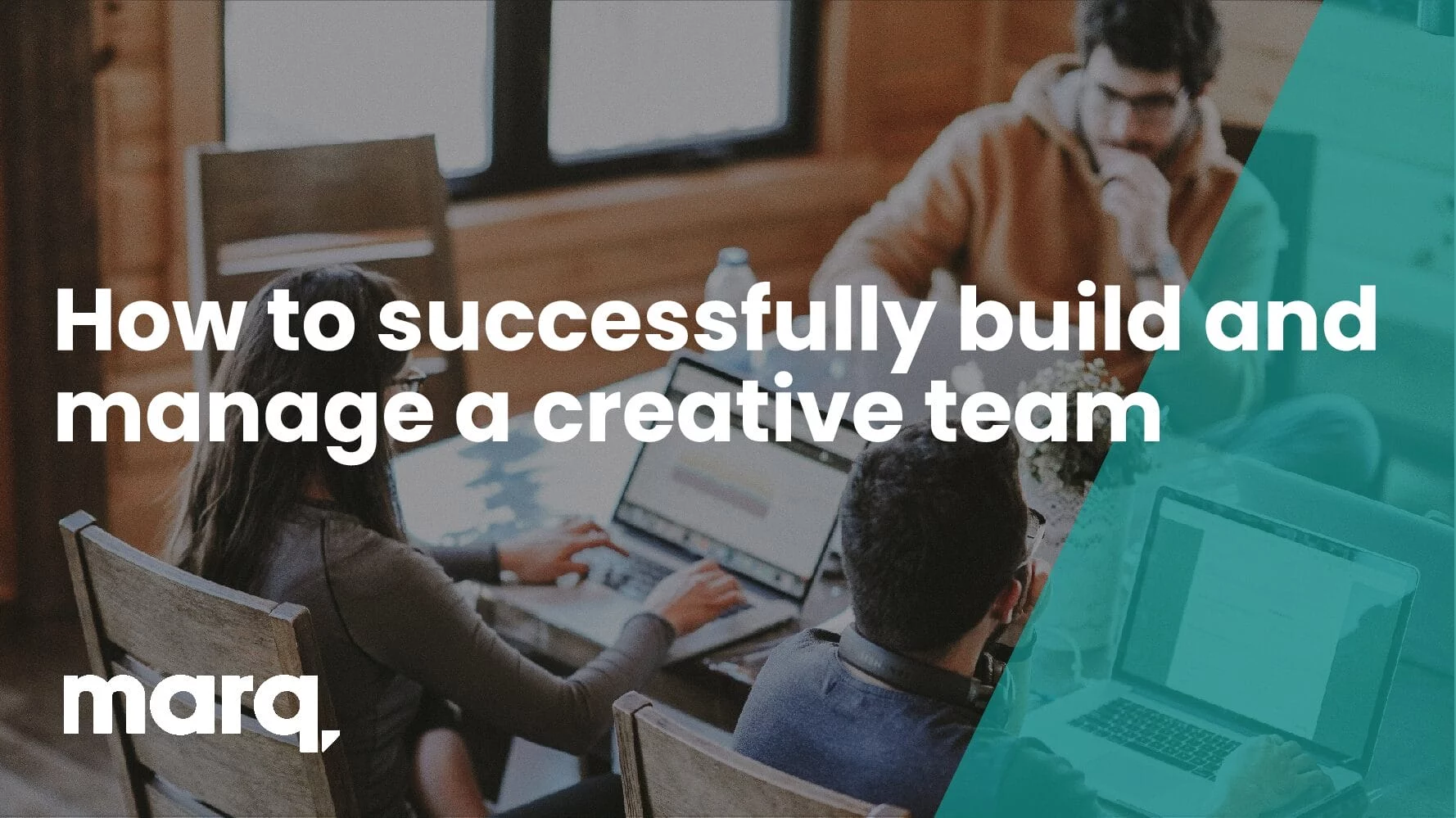Preface: Welcome to the race—Quantity & quality of content
We work in a race. A design race.
At the root of that race lies the simple fact that the design process has fundamentally changed.
It used to look like this:

But now it looks like this:

Instead of a simple process where a single person requests a limited amount of content, many people now create marketing & sales materials on behalf of your company. Vendors, salespeople, partners and employees are all creating content across a variety of channels for an increasingly fragmented audience.
The race is about who can push out the most content and the best content. Who can innovate with design? Who can present a broad, united front across an ever-growing number of media channels? These are questions we have to figure out, and fast.
Additionally, we’re in a world where consumers have become increasingly aware and discerning about graphic design. When a popular company changes their logo, it becomes mainstream news, bringing everyday consumers in on the conversation about what makes good design.
With the higher demand for content, and a more discerning audience, how can in-house creative teams keep up with the demand to both work quickly and deliver quality content?
This situation puts in-house design teams in a pretty tough spot. In this post—the first in a three-part series—I will introduce a best practice and share three related tips to get the most from your in-house design team. Each post in the series will follow the same structural format.

The first practice: Fueling up
Your creative team is given the difficult task of being creative, original and inspiring on demand every single day. It’s essential that they’re able to turn on their creativity when it counts.
To do this, creative teams bring a level of practical science to the table. They’re trained on hierarchy, grids, typographic theory, best practices, and so on. But to find those truly creative “lightning in a bottle” solutions, your design team will need a full tank of ideas, concepts, jokes, random facts and insights to pull from. This tank is what puts creativity on tap, ready to go at a moment’s notice.
Here’s how you help them fill it.
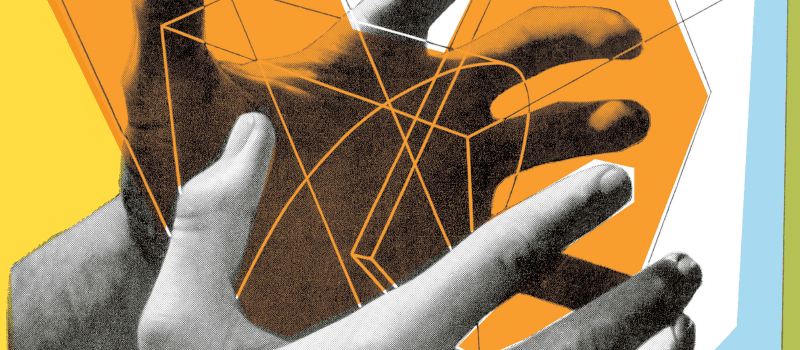
Tip #1: Hone their craft
One of the biggest traps creatives can fall into is becoming complacent, using the same techniques and ideas over and over again. The world of design is rich and deep. One could spend a lifetime learning the ins and outs of all the different designers, movements and techniques, but the demands of work can stunt this learning.
Encourage your team to expand their knowledge base. This can be done through tutorial programs like Skillshare, Lynda or Udemy. On Netflix, there are many documentaries about design worth watching. There are also plenty of free tutorials and documentaries on YouTube. And even though it’s not a visual medium, podcasts can be a great source of inspiration. Finally, you could offer to purchase books about graphic design, so the designers have a small library on-hand to help bust through the occasional creative block.
Another way to help your design team develop new skills is to send them to conferences like Adobe Max, HOW Design, AIGA and Brand New. There, they can hear from key figures in the industry and mingle with their peers. They can keep a pulse on the state of the industry, and often, it is a much-needed morale and creativity boost.
If you don’t have the time or budget to send them to those bigger conferences, there are often local meet-ups that offer many of the same experiences. Check out Creative Mornings or your local AIGA chapter to get plugged in.

Tip #2: Break out of the design box
For design teams to stay sharp, they need various inputs channeling new information into their creative tanks. Keeping this tank full of fuel is essential to solving creative problems at a moment’s notice.
One way to help is by encouraging your team to stretch in ways not directly related to their day job. They could learn a new hobby, try out a new sport, or seek a new cultural experience. Push your team members to get out of their comfort zones. There are a million suggestions you could make: learn to rock climb, weld, or change a car’s oil. Adopt a dog. Listen to new kinds of music, travel to a new part of the world, volunteer at the local food bank. Read the collected works of an author, join a book club, take improv classes. The possibilities are, as they say, endless.
Here’s the catch. The creative tank requires a natural ebb and flow of work, rest, exploration and collection. You can’t get the best work out of your design team if they’re stuck staring at their computers all the time. This requires you, as the creative director, to limit the amount of time you’re demanding them to be in the office. Much of the creative field demands a huge commitment of time, late hours and constant connection. But the best work isn’t going to come from exhausting your team members—it comes from letting them momentarily step away from their ongoing tasks.
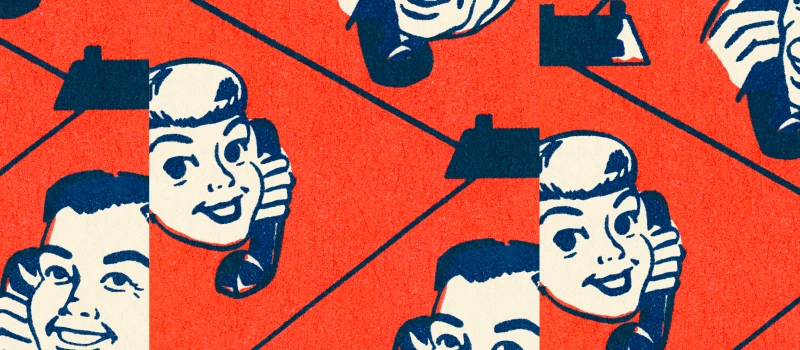
Tip #3: Connect with the customer
During my time here at Lucidpress, I’ve been able to attend various conferences with our sales team.
In 2017, I traveled to conferences with AIGA, HOW and Adobe. I sat in on a bunch of sessions, which was fantastic—a critical part of practicing my craft and learning new skills, right? But to be completely honest with you, the best learning experiences came from manning our booth and meeting potential customers.
As a creative director, sitting at my desk all day, I’m far-removed from the experience of our users. But after interacting with potential customers, answering questions, hearing their frustrations and connecting with them, I’m better able to inject empathy into my work. I’m more motivated to serve them, and I make better decisions by knowing where our customers are coming from.
Make sure to connect your creative team with your customers. Bring in a few clients for an interview session and lead a “design thinking” workshop. Include your design team in meetings with clients, and send your creative team out with your sales team when it makes sense. It will be immensely helpful for them to hear all the questions, complaints, praise and criticism first-hand. You’ll soon find that your team members are more invested and bring better solutions to the table.
Key takeaway
The first step towards getting more output from your creative team is to keep their tanks full. Don’t make the mistake of letting them run dry when there are so many opportunities to refuel.
The second practice: Streamline your process
All the creative fuel in the world isn’t going to help your team if you have a lot of inefficient drag that’s slowing them down. Drag isn’t unique; our research on design team processes shows that creative teams spend a significant amount of time doing mundane work and revisions.
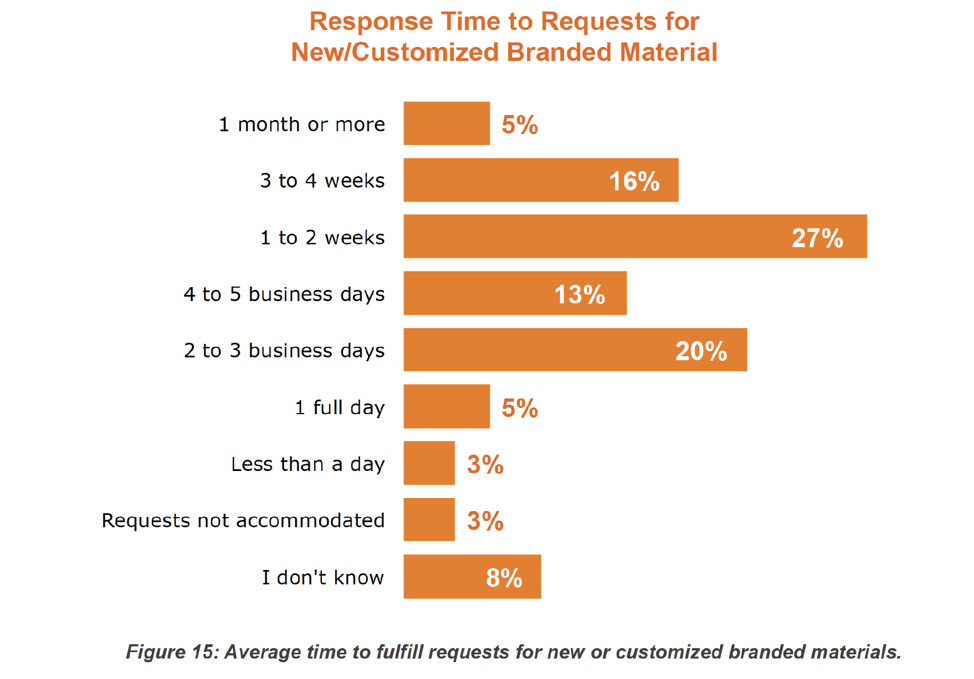
We’ve also found that for virtually half of the organizations we studied, the turnaround time needed to complete a request was at least one week, with 19% saying it would take 3 to 4 weeks or even longer. That’s crazy-in this design race, we have to move faster and be nimbler than that. So, what can we do?
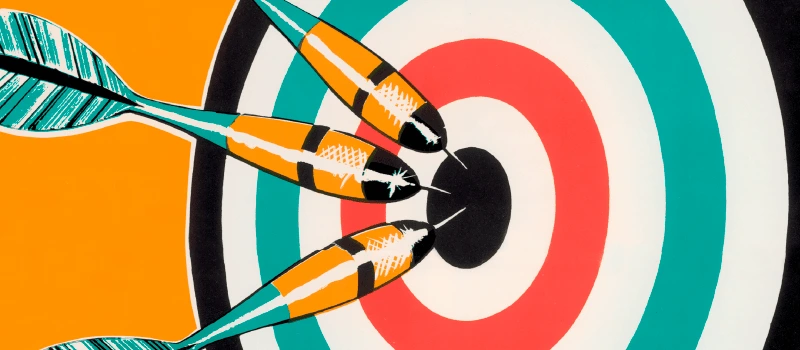
Tip #1: Clear goals
As a creative director, your job is to make sure your team don’t start working on a project without clear goals that are well-defined. But clear goals can be surprisingly hard to narrow down. It takes having one vision and one voice. Give your team a single, clear objective to work towards. You can’t expect them to read your mind, or the mind of anyone else in the company. Be very explicit in what you are trying to accomplish.
Without clear goals on a project, the creative work will suffer. One of the most common errors marketers make is trying to pack too much information into a single piece of collateral or ad. It’s tempting to try hitting every selling point, feature and competitive advantage, but all the messages cannibalize each other-ultimately making the piece less effective. If you don’t have a clear goal, your design will be full of dense text boxes competing with each other for space on the page.
Even worse than cluttered design, without clear goals, there will be arguing and disagreements about the point of the project. And as you know, in this situation, creative teams will bear the brunt of endless revision cycles. Clear goals prevent this waste of time and talent.
To sum up, the best goals are short, punchy and narrowly focused.
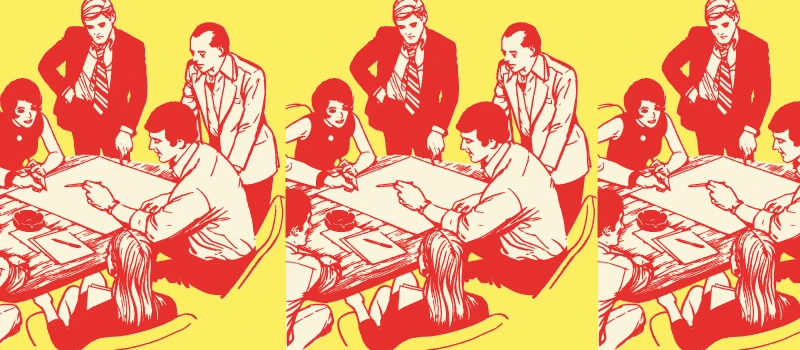
Tip #2: Clear ownership
Any given project probably has a number of interested parties, and they’re usually more than happy to offer their input and thoughts. Some of these parties can be pretty demanding.
It’s up to you as the creative director to cut out all the different voices and determine the person who will have final approval, then focus on them. Others may have good ideas and valuable insights, but if they try to influence the decision-making process, they will only be in the way.
If clear approvals and ownership are not established, the design process can get bogged down-or worse, become a proxy power battle among different egos in the company. You’ll probably find some individuals pulling you aside or emailing you directly to make requests. Push back at those attempts. For the benefit of the creative team, and the company, there can only be one person who has final say.
Demand to know who that is before any work begins.
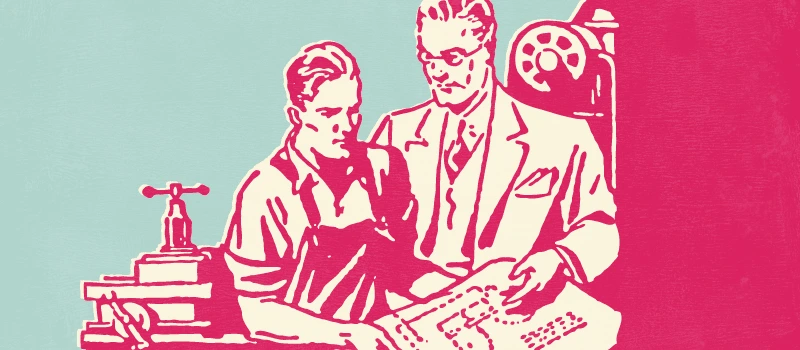
Tip #3: Clear creative brief
The creative brief is the next step after clear goals and clear ownership are established. We all know that creative briefs are essential, but often, they’re not implemented or are implemented poorly. The best creative brief is just that: brief. The worst is long and hastily thrown together, and no one considers it binding. Distilling all of the available information, competing goals and differing opinions into a succinct document is the magic that makes creative briefs powerful.
The distillation process forces everyone involved to really think through the project, to voice their opinions and make hard decisions. Any disagreements about the direction of a project should come up at this stage, before any design work starts.
At the end of the distillation process, the brief becomes a sort of contract. All parties involved should agree to the contents of the creative work, and all creative work should be compared to the brief. Is the creative work meeting the needs and goals outlined in the brief? If it is, great; if not, back to work.
For you and your design team, the brief becomes especially important if and when disagreements arise. Then, you can point to the text and say, “We are completing what was agreed upon in the brief.” It becomes a shield to protect your designers from being jerked around or wasting time. []
So, if your account manager, sales team or marketing team gives you a bad creative brief, it’s your job to talk to them about how to make it better. It can be an awkward discussion, but in the end, a strong brief saves headaches, revision time and frustration.
Put the work in to make your briefs powerful. In the end, it’s the only sure way to cover your ass.
Key takeaway
Your creatives can be fueled up and ready to make great work, but without a streamlined process, they will soon burn out with frustration. It’s up to you to make sure they can work supported and unhindered.
Now, there’s one big thing we’re still missing. Even with those significant improvements, there’s still a snag-and that’s the inescapable fact that creative teams are a bottleneck.
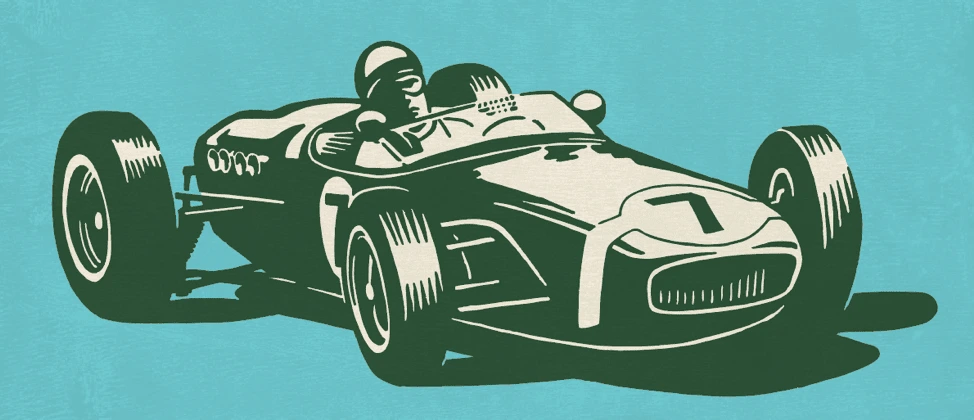
How often has this happened to you: Your designer takes on a new project, she’s excited to get started, and, using a strong creative brief, she comes up with a good design solution.
She exports a PDF and emails it to the account manager for review.
The account manager has a few revisions and shoots an email back.
Your designer happily makes a few changes and sends it back for approval.
This time, the account manager sends it to other interested parties, and guess what-legal has some changes, the marketing manager has changes, and one of the partners has changes. Oh, and some of these changes conflict with one another.
Legal has printed out the document, written illegible notes in the margins, scanned it back in and emailed it to the designer. Now she has to sort through all the different changes, decipher legal’s notes, and try to harmonize the conflicting edits.
Meanwhile, new projects are queuing up, and your team member is feeling pressured to get this project out the door, stat.
Oops, now there’s miscommunication between legal and the partner, and the marketing manager feels miffed that his changes got lost in the mix. After nearly endless revisions, conversations and confusion, your creative is burned out and everyone’s feelings are raw.
This scenario plays out almost every day in the corporate world. The problem is that the design process repeatedly routes through a single person: the creative.
The big question here is how do we eliminate this bottleneck, take extra workload off the creative team, and make the entire process more efficient?
Integrate your design process
The answer starts by changing how we think about the role of creative teams in a company. We need a new design process: one that is more inclusive, efficient and smart. A silo-busting process that works across disciplines. One that recognizes the need for speed in today’s environment while keeping creative teams firmly in the creative driver’s seat. We need creative team members to break out of their isolated roles to better create, collaborate, and control their content.
Here are three tips to help your creative team break out of that deadly cycle of revisions.
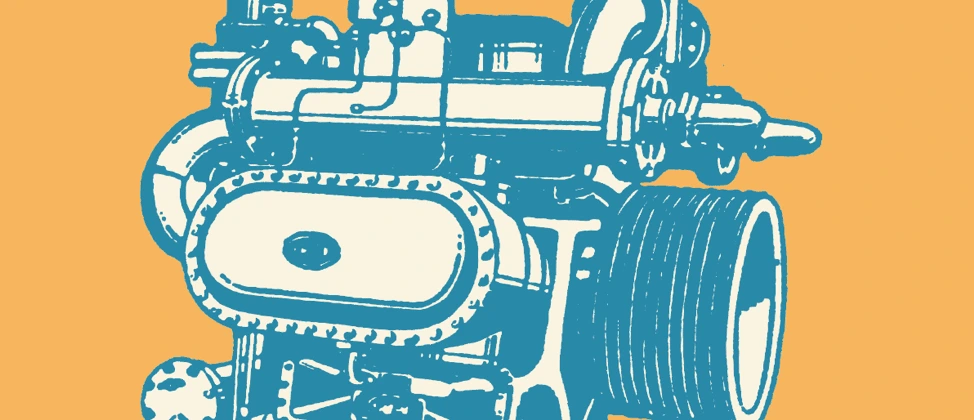
Tip #1: Informed, collaborative, integrated design
We’ve already established that the best work comes from strong creative briefs that all interested parties agree with. Now, let’s take that one step further. Rather than the creative team being the only one who cares about design, what if everyone from the creative team to HR to legal and especially to the executive team were invested, educated and involved in the design process? I call this integrated design.
Integrated design means everyone in the company is:
- Educated on the brand’s standards
- Committed to enforcing compliance
- Prepared to participate in design revisions
Integrated design means the creative team can engage everyone involved in an effective, collaborative way, greatly reducing the amount of revision time.
To be clear, I’m not suggesting design by committee. Design by committee happens when people believe they have authority over the design process, or parts of the process that shouldn’t involve them. That’s the last thing your creative team needs. Instead, integrated design elevates the process into a business essential, putting creative team members in control so they’re no longer the bottleneck.
Host a short, smart training session to review the brand standards and why they matter. Show examples from competitors of how their branding is succeeding or failing. Paint the picture for your company that a strong brand is essential to success. Then, get commitment from everyone to help enforce brand standards. That way, your creative team will feel less pressure to constantly police everything your company puts out.
Show the best way for employees to give feedback. Do they need to be trained on certain software programs? Do they need to learn a little design vocabulary? Since you’ve established that strong branding and design are essential, everyone will be open to learning a new process.
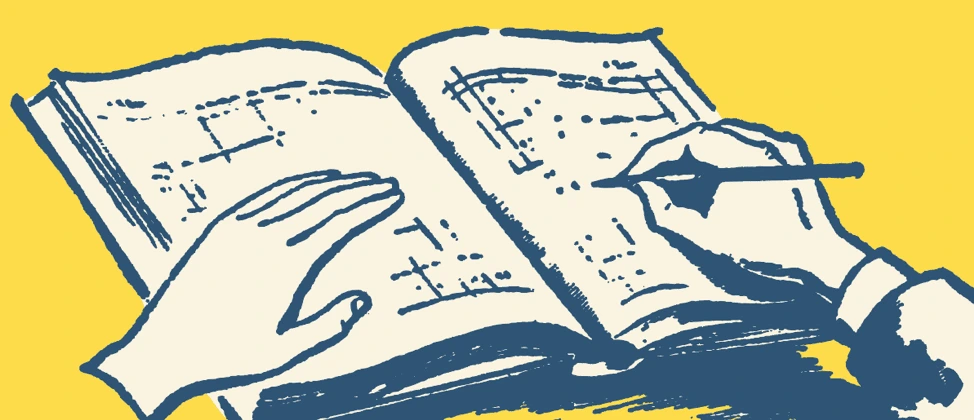
Tip #2: Rev up your brand guidelines
To reduce the time design teams spend on recreating work, you need to set up strong brand guidelines. And by strong, I mean that they are thorough and easily accessible.
Branding isn’t just a set of colors and typefaces. It’s a system based on a company’s core values and traits. [] Pointing out the logical connections between company values and branding will strengthen employees’ commitment to using the brand guide.
Equally important as having strong guidelines is making sure they’re accessible. What good is a brand guide if no one can use it?
A PDF with your brand guidelines is a good start, but it’s limited because it has to be emailed back and forth, and, if it is ever updated, you run the risk of employees referencing old guidelines. An even better solution is to have a living brand guide. A living brand guide is a centralized, dynamic system that lets your creative team update the brand standards (which instantly updates them for everyone else).
One of the reasons I love Lucidpress is that it serves as a powerful living brand guide. It stores brand logos, colors, fonts and other assets, making it super easy for creative teams to set the standard and keep everyone on track.
Designers can set brand assets as the default settings for each new document in Lucidpress, making it super easy and convenient for employees to design with the right brand elements from the start. Since Lucidpress lives in the cloud, designers can make updates on the fly and sync them company-wide.
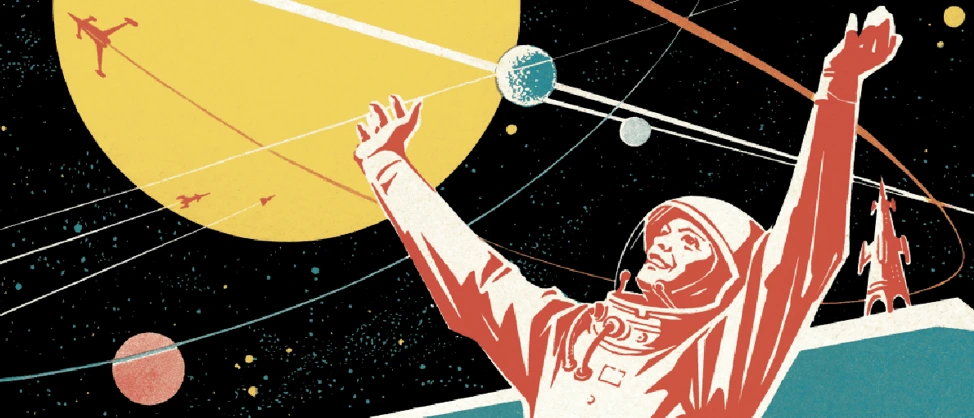
Tip #3: Do it once, do it right
One more story. How often do you have small, recurring design requests? For example, maybe your sales team needs a flyer updated every time they go to a convention. It’s a simple change, but for the creative team, the time adds up.
What if you need to make promotional materials for all of your franchise locations, and your creative team has to spend a ton of time simply switching out addresses and hours? This is a huge waste of time and talent. Your creative team should be focusing on delivering great creative work, not sorting through countless edit requests.
One solution is to give everyone in the company access to Publisher or InDesign… but then the creative team has no control over the brand standards. Plus, everyone will be sending files back and forth, managing their own fonts, and losing track of assets. Once again, your design team becomes the bottleneck.
The key to freeing them up is through cloud-based, lockable templates. Lockable templates empower employees other than creative team members to create and update branded content.
This is a special feature we’ve built for Lucidpress. Creative teams can make templates, then lock down the fonts and colors, the position of text boxes, logos and legal copy-whatever you don’t want others to change. Because it’s all cloud-based, creative teams can easily manage, update and find all the files different employees are working on. Anyone can customize the content to their needs without adding to the creative team’s workload.
This is a huge breakthrough in the design process, and our customers have enjoyed great success in real-life applications. An art director from Reinhart Realty told us this:
“Some agents didn’t feel it was necessary to include the Reinhart logo on their content. But now that we can lock down our brand assets on the templates, agents and brokers can’t accidentally mess things up.”
The results are pretty stunning. Both Reinhart admins and agents agreed that Lucidpress saves them about 2 hours of work per week. With 160 Reinhart employees using Lucidpress, that’s 320 hours of work saved per week-or 16,640 hours saved per year.
That is the real result of an integrated design process.
Wrapping up
As a creative director, your designers are one of your greatest assets. Focus on fueling them up, incorporating an integrated design process, and providing the tools to create great, on-brand materials. It’s the only way you can win this big design race we’re in.
